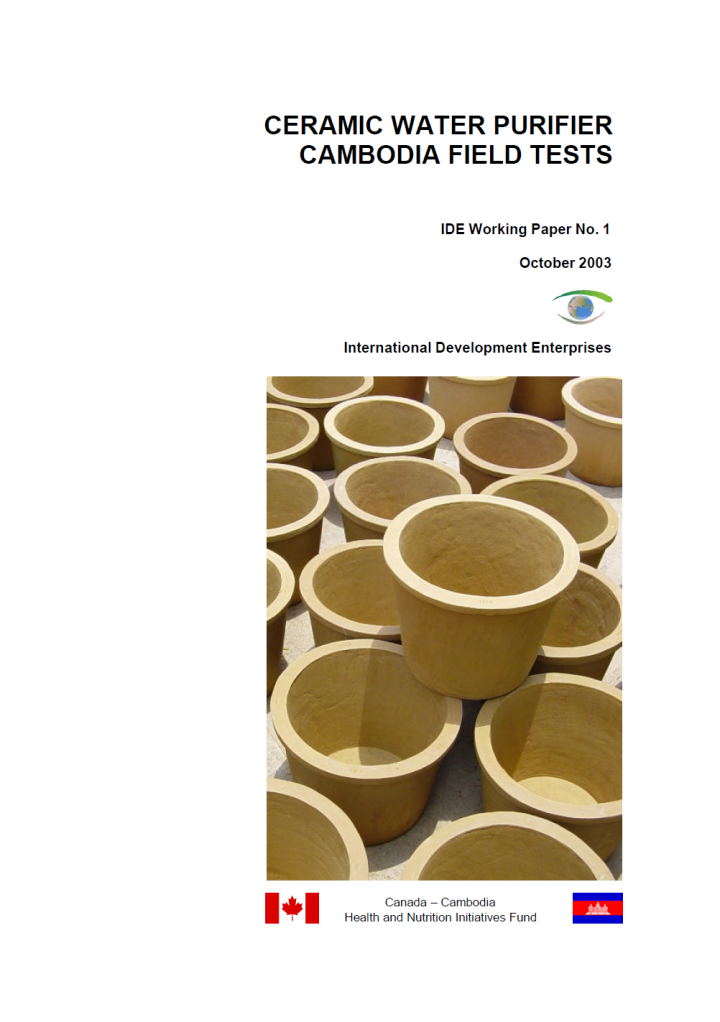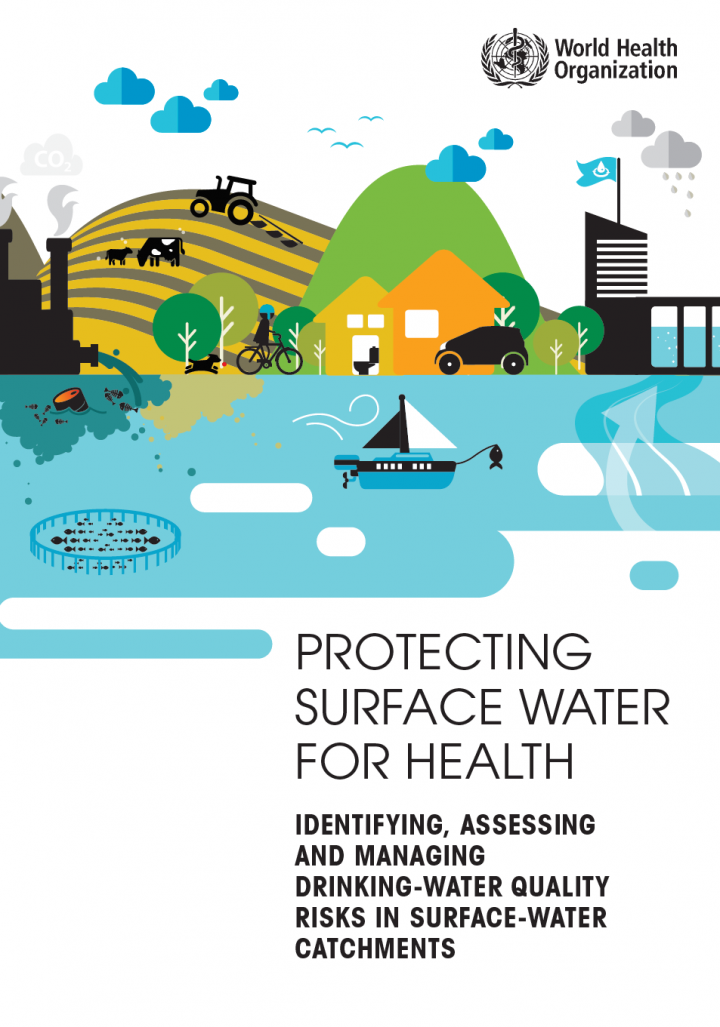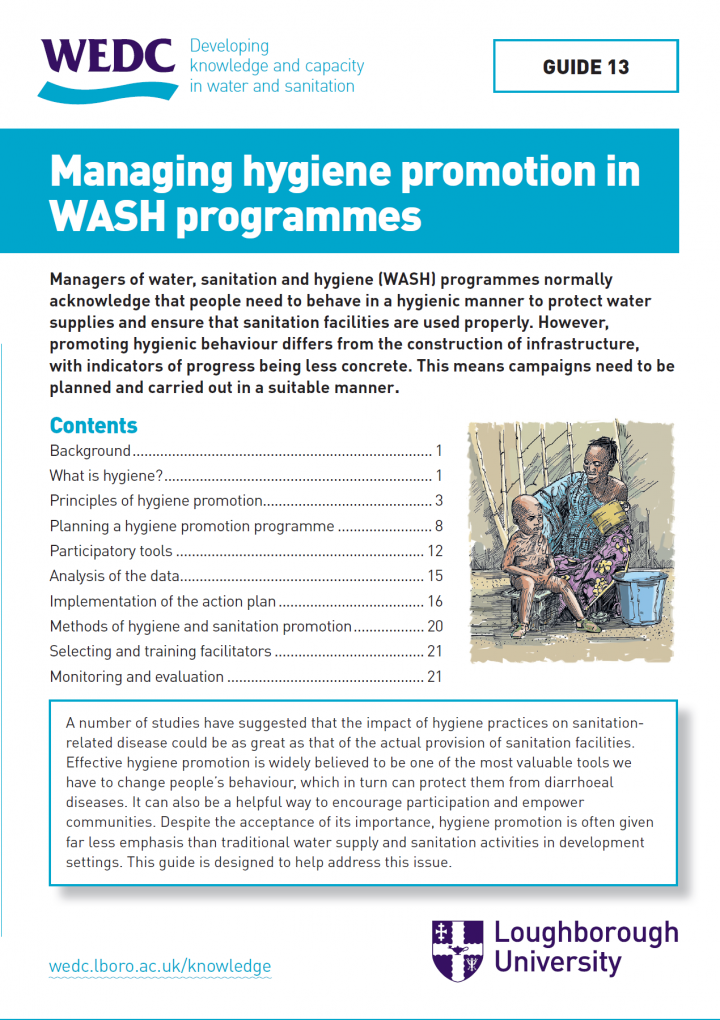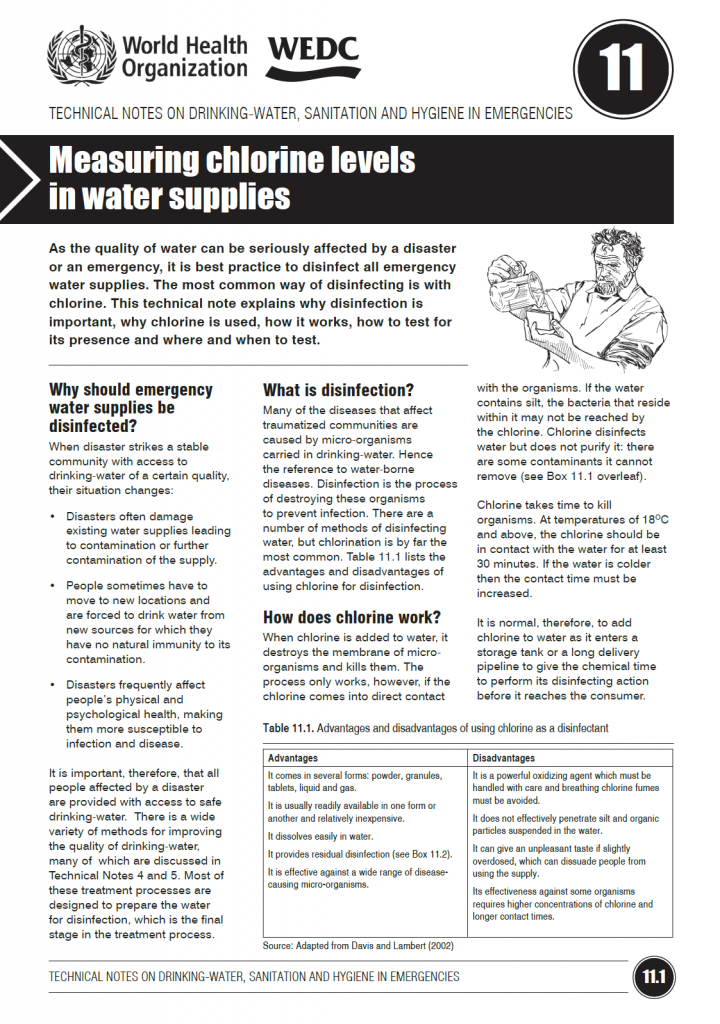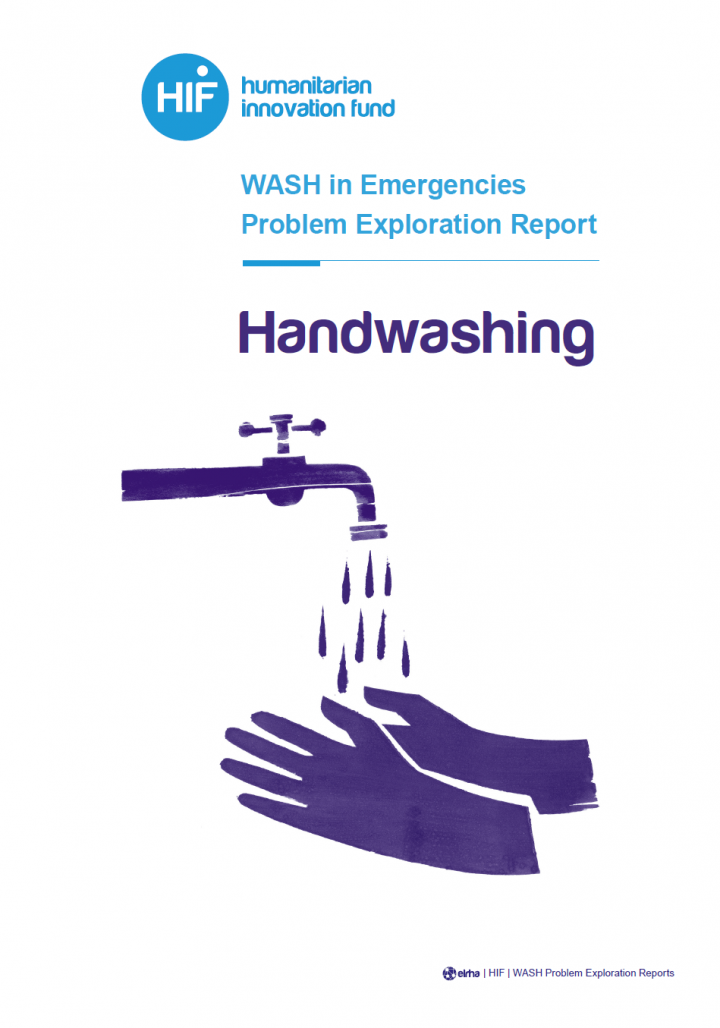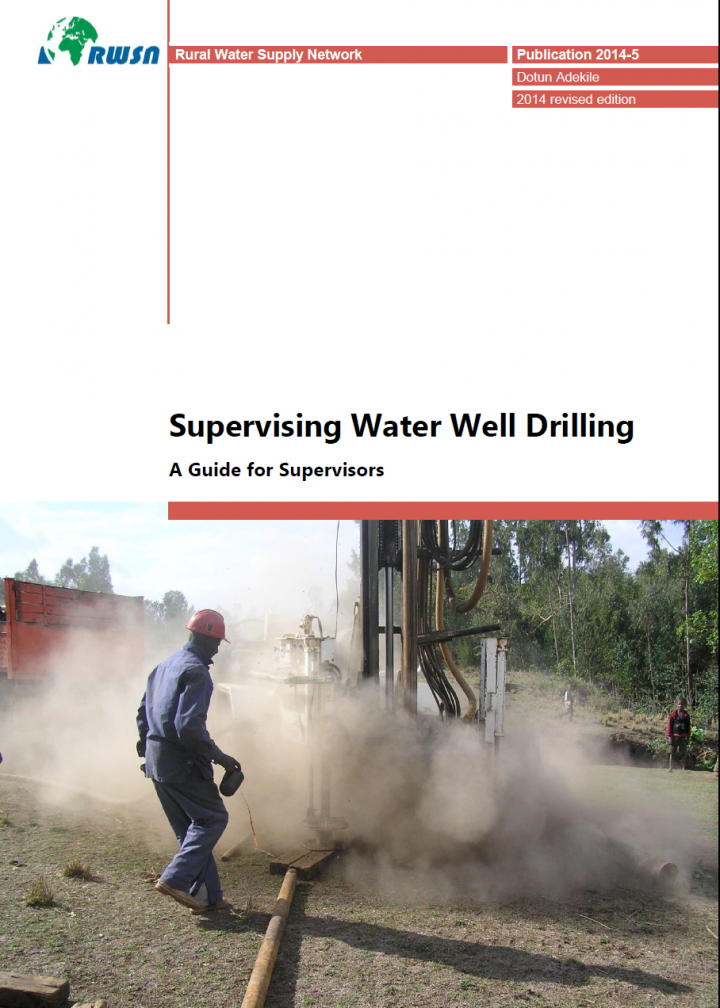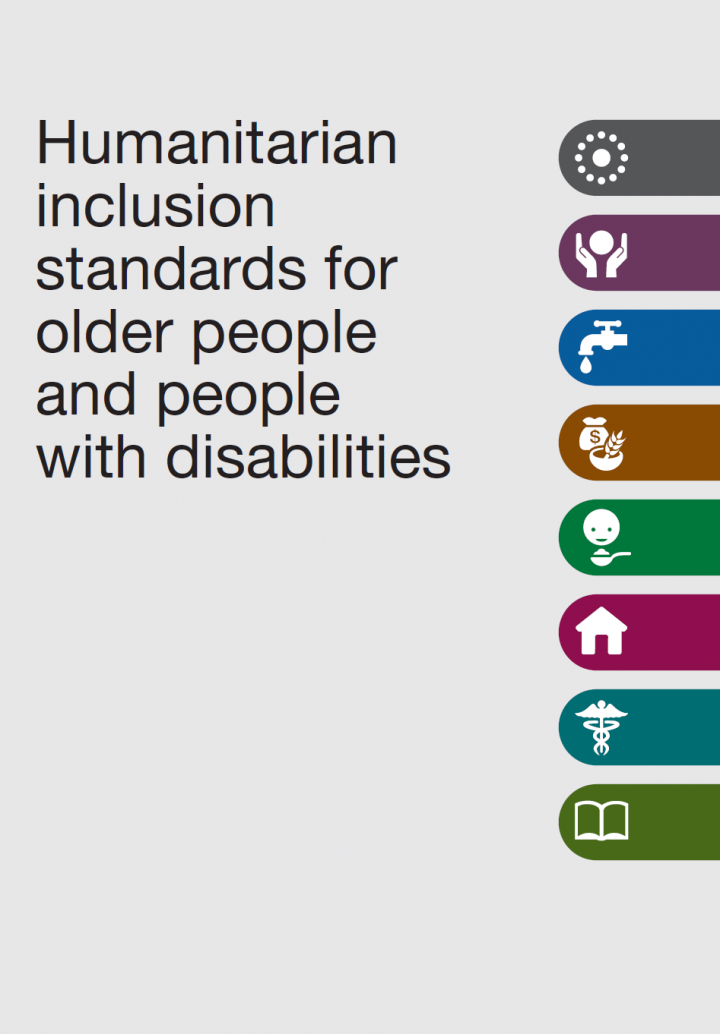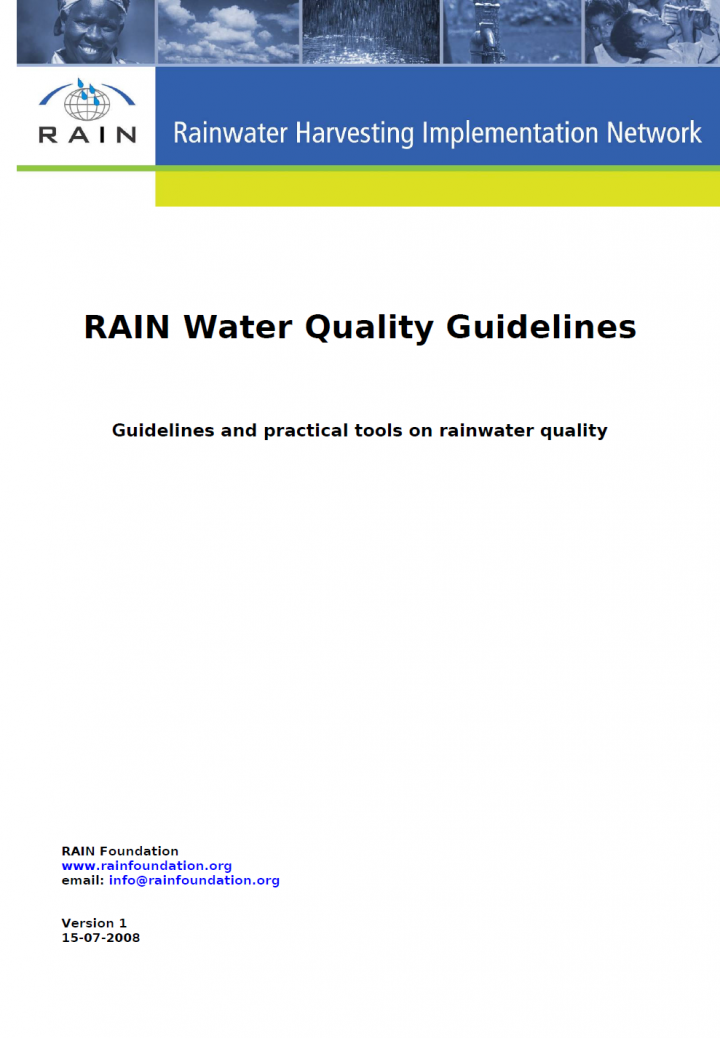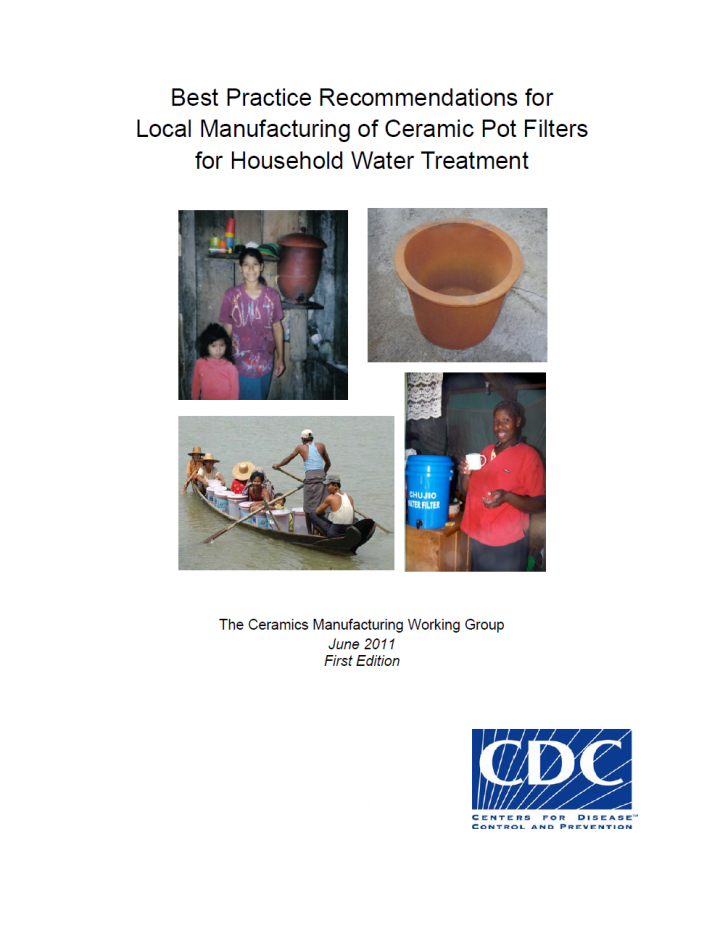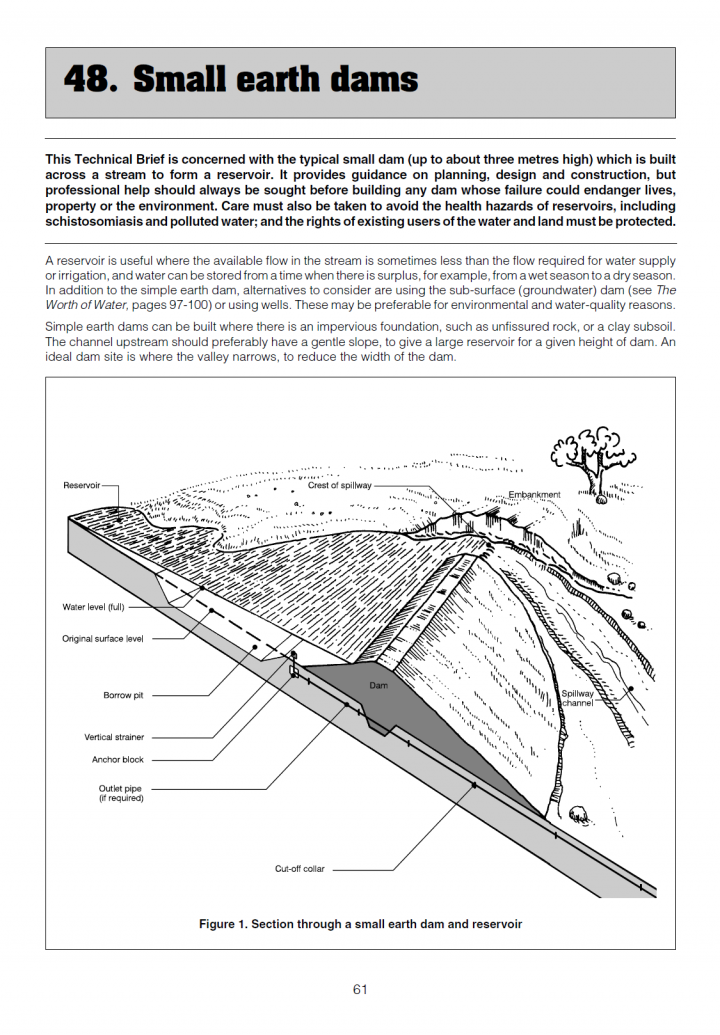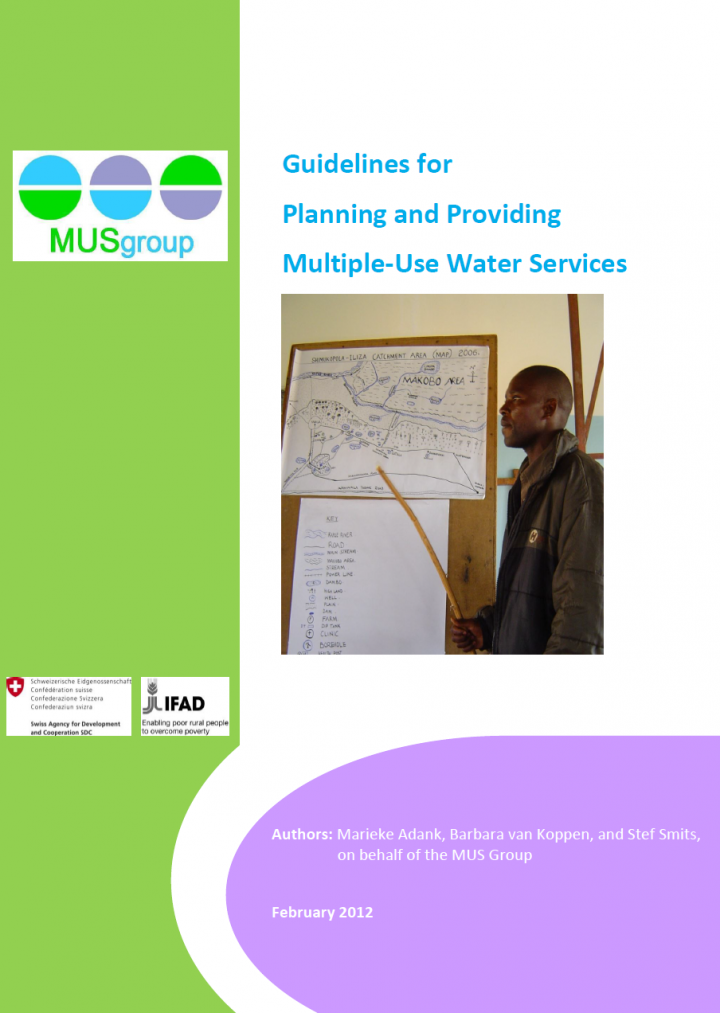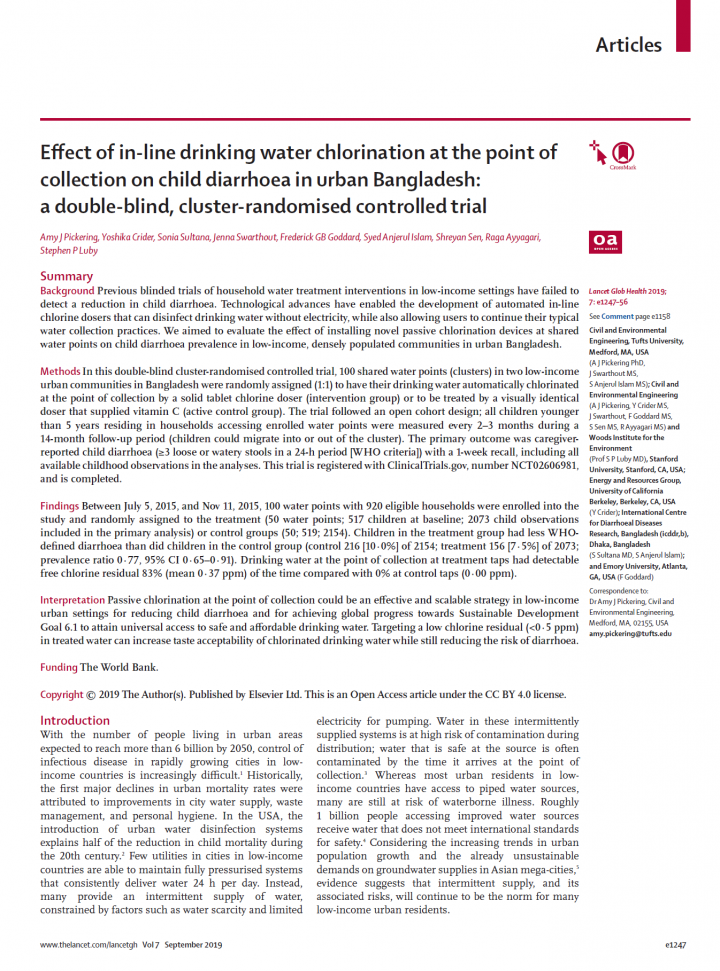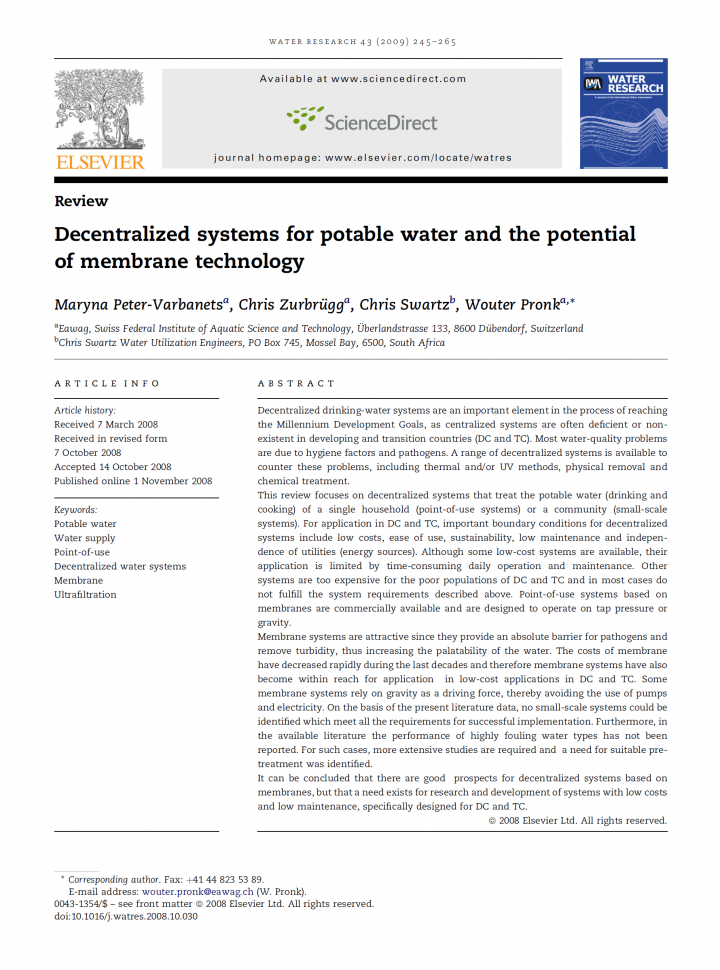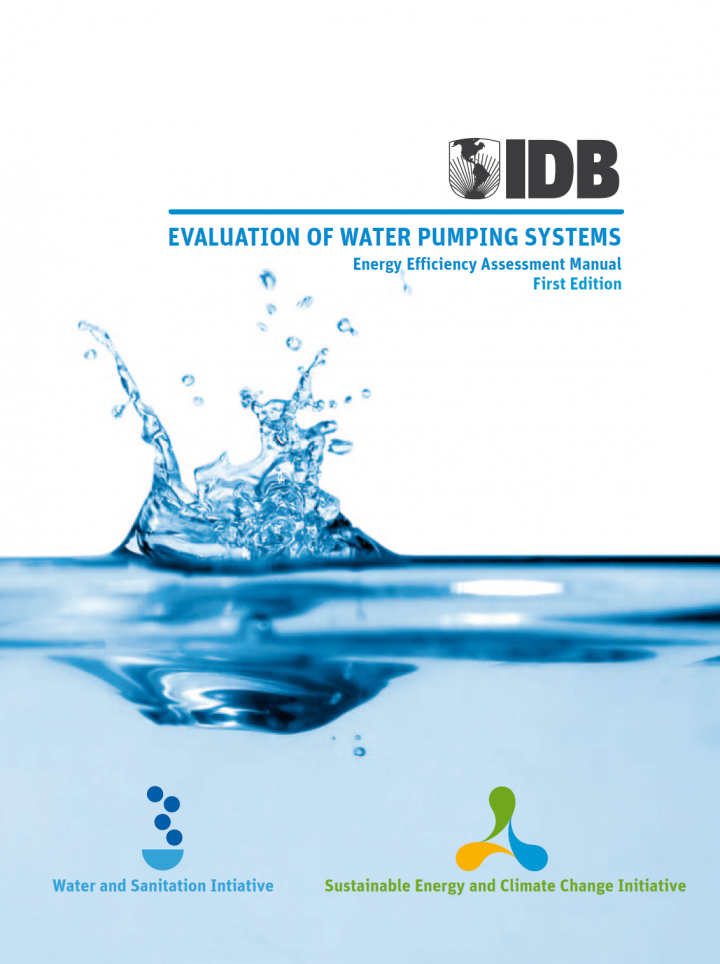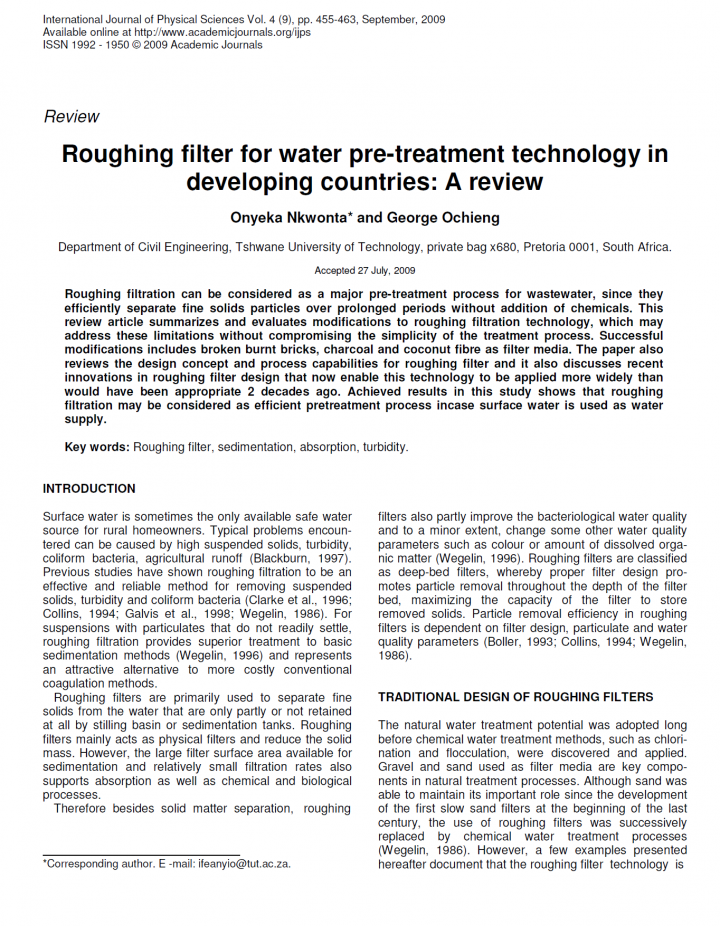Searching for information on Sanitation Workers?
The Sanitation Workers Knowledge + Learning Hub is the best source for all current news, trends, articles and updates on sanitation workers rights around the world.
Interest in using ultraviolet (UV) light to disinfect drinking water is growing among public water systems (PWSs) due to its ability to inactivate pathogenic microorganisms without forming regulated disinfection byproducts (DBPs). UV light has proven effective against some pathogens, such as Cryptosporidium, that are resistant to commonly used disinfectants like chlorine.
The United States …
This report summarizes results from a year-long pilot project in Cambodia to test the Ceramic Water Purifier, a low-cost household water treatment technology that removes microbiological contamination at the point of use. The pilot project was conducted by International Development Enterprises (IDE) with financial assistance from the Health and Nutrition Initiatives Fund supported by the Canadian …
Safe drinking-water is essential to sustain life – it is the basis for human health, survival, growth and development. Therefore, access to safe drinking-water is a basic human right. Recognition of this right contributes to the survival of human beings and disease prevention, because water is used not only for drinking, but also for many other purposes such as hygiene, food production, …
Managers of water, sanitation and hygiene (WASH) programmes normally acknowledge that people need to behave in a hygienic manner to protect water supplies and ensure that sanitation facilities are used properly. However, promoting hygienic behaviour differs from the construction of infrastructure, with indicators of progress being less concrete. This means campaigns need to be planned and carried …
As the quality of water can be seriously affected by a disaster or an emergency, it is best practice to disinfect all emergency water supplies. The most common way of disinfecting is with chlorine. This technical note explains why disinfection is important, why chlorine is used, how it works, how to test for its presence and where and when to test.
Water tankering (also known as water trucking) can be a rapid means of transporting water to areas in need during the initial phase of an emergency. Tankering operations, however, are expensive and relatively time-consuming to administer. This technical note considers key issues relating to the effective and efficient use of tankers during an emergency.
The promotion and uptake of effective handwashing practices are critical in ensuring the health of populations affected by emergencies and humanitarian crises. Along with general public health benefits, handwashing can reduce the risk of diarrhoeal disease by up to 50% (Curtis and Cairncross, 2003; Fewtrell et al., 2005; Luby et al., 2005). Handwashing with soap is recognised as an easy, …
The proposed chapter addresses a comprehensive overview of the history and future outlook of ultrafiltration/microfiltration (UF/MF) membrane for desalination water pretreatment. Known theories on UF/MF membrane formation from phase inversion (Dr/wet) systems can be prolonged to define the consequences of high or low molecular weight additives. Also, direct material reengineering and surface …
Panchayats have been assigned the responsibility for executing rural water and sanitation. To do this successfully as equal partners with the government and engineers, they need a lot of support over the long term. The government and NGOs who will support them have important roles to play to ensure quality water and sanitation services are provided in the long term in an an equitable manner.
Good supervision of water well drilling is essential for the provision of long-lasting water wells. This guidance note assists geologists and engineers in charge of the supervision of borehole construction as well as project managers. It can be used to prepare for training, and as a manual.
This guide details the responsibilities of the drilling supervisor at the different stages of borehole …
Globally, around 15 per cent of the population are living with some kind of disability. An estimated 13 per cent of people worldwide are over the age of 60. More than 46 per cent of those who are over the age of 60 have a disability. Humanitarian principles require that humanitarian assistance and protection are provided on the basis of need, without discrimination. No one should be excluded …
DECENTRALIZATION The beginnings of decentralization in Côte d'Ivoire date back to the colonial period, when the country was a French colony with the existence of mixed communes and municipal councils (partly elected and partly appointed). Medium-sized communes were run by councils headed by “Mayor Administrators” appointed by the Central Colonial Government. Large communes were administered …
The USAID/West Africa Municipal Water, Sanitation and Hygiene Activity (MuniWASH) is a five-year project currently operating in Benin and Cote d’Ivoire, which is funded by the United States Agency for International Development (USAID) and implemented by Tetra Tech. MuniWASH supports municipalities to provide sustainable water and sanitation services to vulnerable and underserved populations in …
This document will address RAINs guidelines towards water quality and will give practical
guidelines to improve and maintain an acceptable water quality of harvested rainwater for
drinking purpose. It will describe criteria for water quality of harvested rainwater, placed within
the socio-economic and geographical context of RAINs target countries. The most practical
approach of improving …
Ceramic filters have traditionally been used to treat household water in many countries, and are commonly available for purchase in both developed and developing countries. Currently, the most widely promoted household ceramic filters in the developing world are based on a design developed in Guatemala in 1981 by Dr. Fernando Mazariegos who, working with the Instituto Centro Americano de …
This Technical Brief is concerned with the typical small dam (up to about three metres high) which is built across a stream to form a reservoir. It provides guidance on planning, design and construction, but professional help should always be sought before building any dam whose failure could endanger lives, property or the environment. Care must also be taken to avoid the health hazards of …
The multiple-use water services (MUS) approach is defined as an approach to water services that
considers the multiple needs of (poor) water users, who take water from a number of sources, and
communities’ own priorities as the starting point for investments in new infrastructure,
management arrangements, the rehabilitation of existing infrastructure, or for improvements in
management …
A guideline based on the Swiss Re 2007 award winning pilot project “Water harvesting to improve livelihoods in southern Ethiopia: from pilots to mainstream” and large-scale implementation of sand dams in Kenya.
In the Kituï District of Kenya the SASOL (Sahelian Solutions) Foundation began constructing sand storage dams in 1995. Since this period, over 500 sand storage dams have been …
Previous blinded trials of household water treatment interventions in low-income settings have failed to detect a reduction in child diarrhoea. Technological advances have enabled the development of automated in-line chlorine dosers that can disinfect drinking water without electricity, while also allowing users to continue their typical water collection practices. We aimed to …
Decentralized drinking-water systems are an important element in the process of reaching the Millennium Development Goals, as centralized systems are often deficient or non-existent in developing and transition countries (DC and TC). Most water-quality problems are due to hygiene factors and pathogens. A range of decentralized systems is available to counter these problems, including thermal …
As part of its Technical Cooperation "Energy Efficiency for Caribbean Water and Sanitation Companies," the Sustainable Energy and Climate Change Initiative (SECCI) of the IDB financed the development of a regional methodology to improve energy efficiency and maintenance of water companies in Latin American and Caribbean countries. This methodology, developed by the consulting firms Econoler …
Seawater desalination facilities require an intake system capable of providing a reliable quantity of clean seawater with a minimum ecological impact. To meet these objectives, it is essential that a thorough assessment of site conditions be conducted. Physical characteristics, meteorological and oceanographic data, marine biology, and the potential effects of fouling, pollution, and navigation …
Historically, interventions to provide people with safe water have focussed on improving water sources. However there is now a consensus among the WatSan community that even if the drinking water source is safe it can easily be re-contaminated during its transportation and storage in the household (Clasen and Bastable, 2003). A safe water intervention should therefore begin with an improved water …
This equipment is part of several packages devised by the Oxfam Public Health Engineering Team to help provide a reliable water supply for populations affected by conflict or natural disaster. The equipment is designed to be used with any or all of the following Oxfam water equipment: Water Storage equipment, Water Coagulation and Disinfection equipment, Water Filtration equipment, Water …
Roughing filtration can be considered as a major pre-treatment process for wastewater, since they efficiently separate fine solids particles over prolonged periods without addition of chemicals. This review article summarizes and evaluates modifications to roughing filtration technology, which may address these limitations without compromising the simplicity of the treatment process. Successful …


